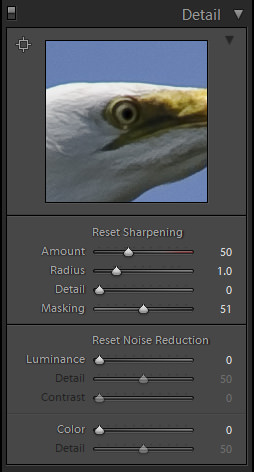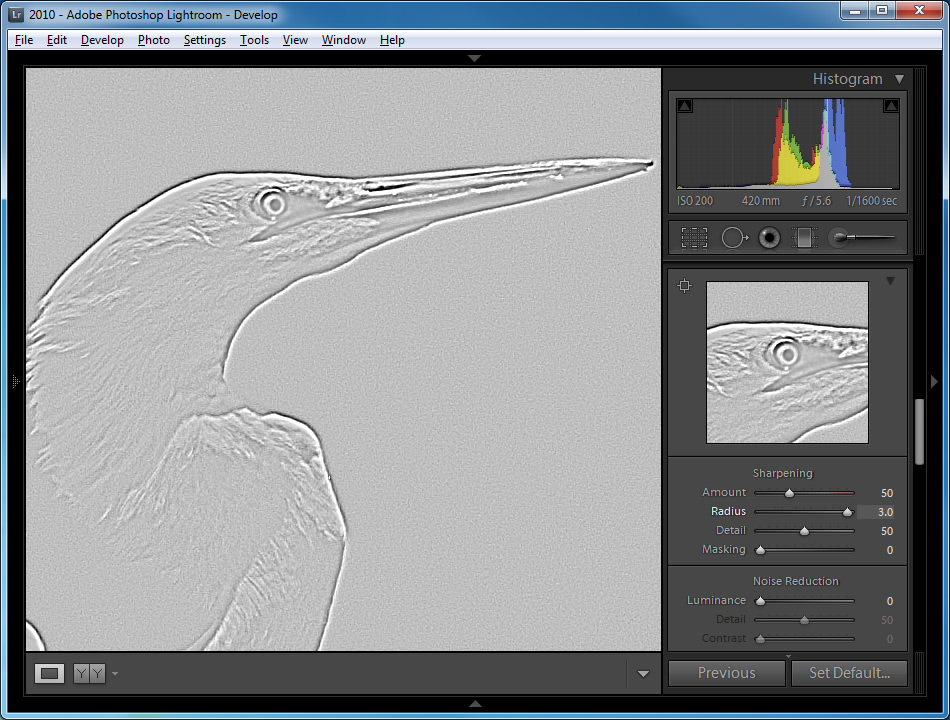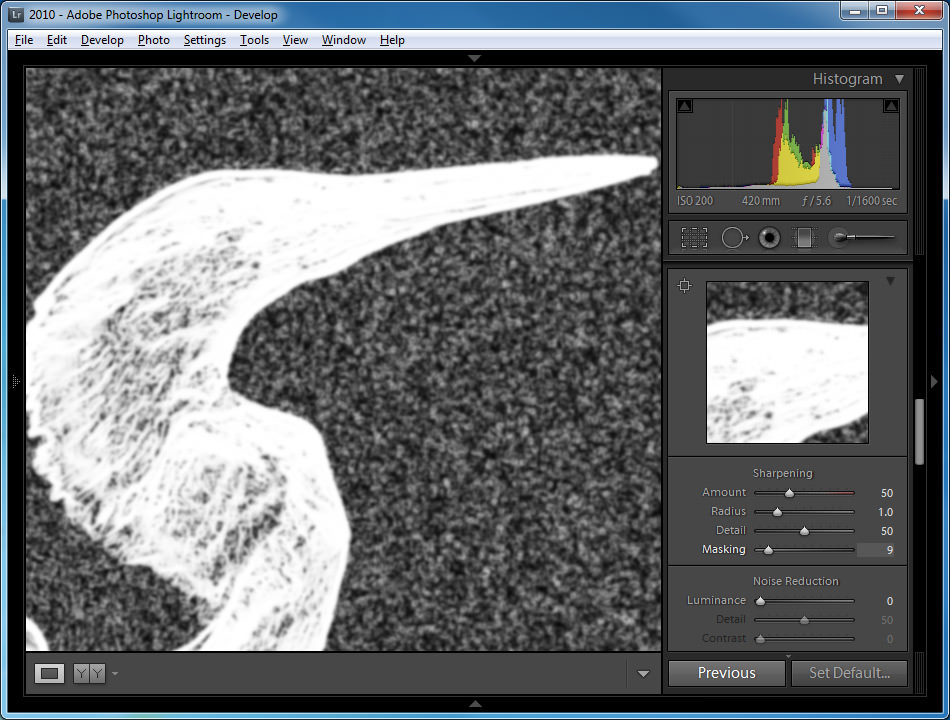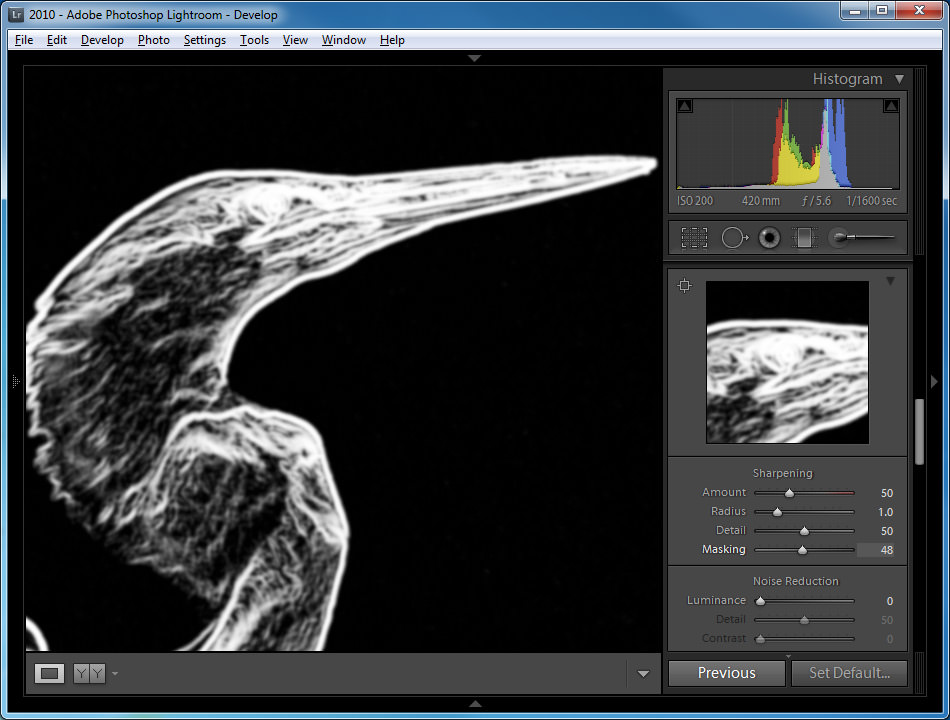Adobe Photoshop Lightroom comes with powerful tools to sharpen images during post-processing. Located in the Develop module of Lightroom, the Detail box contains both Sharpening and Noise Reduction tools that allow Photographers to enhance their digital workflows by fine-tuning images and getting them ready to be published and printed in a quick and efficient way. Since I have already covered the noise reduction part in my Noise Reduction Tutorial, in this article, I will show you how to properly use the Sharpening tool instead.
1) Problems with Sharpening Images
Sharp images look aesthetically more pleasing than soft or blurry images. Because of this, most photographers try to sharpen their images in post-processing applications, which can result in all kinds of problems such as:
- Over-sharpening when too much sharpening is used, it results in harsh, visible lines on edges and around objects. Over-sharpened images often look too textured.
- Too much noise using excessive amounts of sharpening can add a lot more noise to an image. The worst result is when an image is already shot at high ISO levels and sharpening is applied on top of the digital grain, resulting in even more noise.
- Zigzag lines straight thin lines can get converted over to zigzags and circular shapes can get cubic transitions when excessive sharpening with a large radius is applied.
Here is an example of an over-sharpened image:
Note the amount of noise, visible lines, zigzag lines on the grass and too much texture all because of over-sharpening an image.
2) Lightroom Detail Panel Sharpening
Lightroom comes with a very powerful sharpening tool within the Develop module, under the Detail panel. It is very similar to Photoshops Unsharp Mask tool, but better, because it gives you extra controls over how you can sharpen your images. Before Lightroom, I used to sharpen every single image through Photoshop, which was painful, time-consuming and destructive (meaning once you make changes to an image in Photoshop, you cannot undo them). Unlike Photoshop, Lightroom does not modify images it stores changes either in a separate file, or in image headers, depending on the image format. If I make a mistake or want to go back to the original image, I can simply reset the image to its original state or revert modifications through the history panel. Being able to specify custom settings on images during the import process is also another time saver, especially when working with thousands of photographs.
3) Sharpening Settings
It is always easier to explain things with examples. Go ahead and open a sample image in Lightroom, then do the following:
- Press D on your keyboard or click on Develop on the top right panel to get into the Develop module.
- Left-click your image to view it at 100%. I highly recommend to view your images at full size (100%) before making any sharpening changes.
- Expand the right panel in Lightroom and scroll down until you get to Detail.
The detail panel will look like this:
* Note that the Noise Reduction section will look different if you are using Lightroom 2.
The Sharpening Tool has four different sliders:
- Amount the amount of sharpening you want to apply to an image. Zero means no sharpening is applied to the image. The higher the number, the more sharpening you will see. Too much sharpening will also increases the noise. I typically set 50 as the default value to my images, but sometimes can increase or decrease the amount depending on the image and noise levels.
- Radius the size of the sharpening area around the edges. The default value of 1.0 means that Lightroom will apply sharpening over 1 pixel around the edge. If you increase the radius to a maximum value of 3.0, sharpening will be spread over three pixels around the edge, resulting in thicker, shadowy edges. I use the default radius value of 1.0 most of the time and I recommend to keep it under 1.5.
- Detail as the name suggests, the detail slider controls the amount of sharpening on the edges or details of the image. A small value like 0 only sharpens large edges, while a high value like 100 would sharpen even the smallest edges. For example, if you are working on an image of a bird, if you leave the detail at 0, only the edges of thick feathers would get sharpened, while using a larger number above 50 would bring out and sharpen even the thinner feathers. I try to stay below 50 on the detail slider, because higher numbers often considerably increase the amount of noise.
- Masking the most useful and versatile feature that masks out areas that should not be sharpened, similar to the mask tool in Photoshop. This is the tool that would take care of the extra noise produced by Amount and Detail sliders around your subjects. While it is not very useful for images that have too much detail and too many edges all over the image, it works magic for images that isolate subjects from the background. The softer and less defined the background, the better the results. See examples below.
Combining the above controls, you could effectively sharpen your images without much work and dramatically cut your workflow time. Lets now play with a real image to see how we can sharpen it in Lightroom.
4) The Option/Alt Key
I had to write about this in a separate header so that you dont miss it. The Option (Mac) or Alt (PC) key on your keyboard can do a lot of the magic in Lightroom. One of the biggest challenges in sharpening, is seeing the effect of sharpening on your images. Sure, viewing the image at 100% helps, but playing with such sliders as radius, detail and masking often confuses Lightroom users, because slight changes could be invisible when looking at the image. Thats when the Option/Alt key comes in handy. Simply press the Option/Alt key on your keyboard and then use the mouse to move the slider from left to right for any of the four settings. You will see something like this:
Thats how the image looks like when I press the Alt button and move the Radius slider. It gives me a clear indication of how exactly radius will affect my image. As you can see, at the maximum setting of 3.0, the radius around the edges is too thick, giving an unnatural look to the image and dark shadows around the subject. Pressing the Control/Alt key while moving the sliders for Amount and Detail will also show the effects on a gray background, giving us a pretty good idea on how the setting will affect the image.
The Masking slider works a little differently with the Option/Alt key. As I have explained earlier, the masking tool is used for leaving the smooth areas intact, while applying sharpening only to the edges. We can control where the edges start by moving the slider from 0 to the right. At 0, no masking is applied to the image and therefore, the entire image is sharpened. If you have a smooth background like the sky, sharpening will certainly add noise to the sky, even when noise is very minimal to start with. Here is what happens when you start moving the slider:
As you can see, both the bird and the background have lots of grain. This means that sharpening is applied to all of those areas. Now take a look at this image:
As I moved to the right, I was able to get rid of the static/grain in the sky and only leave the bird in the frame. What this does, is it makes Lightroom apply sharpening only on the bird, leaving the surrounding areas intact. This is a great way to selectively sharpen subjects, without affecting the entire image.
5) Sharpening Example
Lets now jump to a real example. Download the full-size version of the following image to your PC and import it into Lightroom:
- Inside Lightroom, press the D button to go to the Develop module. Once you are in the Develop module, open the right sidebar and scroll down to Detail.
- Hold the Option/Alt key and move the Amount slider to around 75. Note how the background gets a little noise when the value goes above 50. Try moving all the way to 100 to see plenty of noise in the background. Go back to 75 and release the Option/Alt key when done.
- Hold the Option/Alt key and move the Radius slider from 1.0 to 3.0. Note how thick the edges around the bird get. Release the Option/Alt key and see how badly the edges look in color. Now put the Radius back to 1.0 by moving the slider or typing 1 on the right hand side.
- Hold the Option/Alt key and move the Detail slider to 75. Note the whiter edges and added noise to the background.
- Finally, hold the Option/Alt key and move the Masking slider from 0 to 50. Note that only the bird and the tree are visible the background should be completely black.
- Look at the final result and press the button on your keyboard several times to see how the image looked before and after you applied sharpening to it. You can also see the Before and After images in two separate windows by pressing the Y button, or you can use the switch on the Detail panel to turn Sharpening on or off.
Here is a before and after example move your mouse over to see the difference.
The above values are for this example only I normally do not use values above 50 for Amount and Detail sliders.
6) What about Output Sharpening?
Many Lightroom users get confused about the Output Sharpening feature in the Export window. Should it be used after sharpening is already applied to an image? If you are exporting the image in its original size, then I recommend turning off Output Sharpening during the export process. If you are resizing the image to a smaller version for the web, then I recommend leaving it checked with the Screen/Standard amount of sharpening applied. When images are reduced in size via Lightroom, the sharpness is also slightly reduced, so sharpening the images a little bit does not hurt. Output Sharpening does not use the same settings you used for the image in the Develop Module though it just slightly sharpens the entire image.
Please let me know if you have any questions in the comments section below.






ConversionConversion EmoticonEmoticon